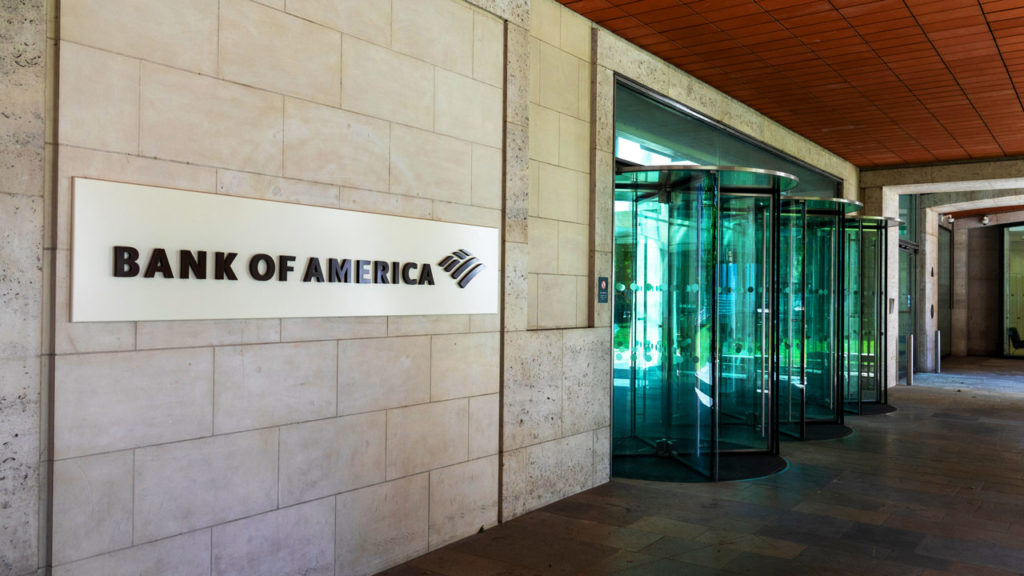by Peter Schiff, Schiff Gold:

Four months after the failure of Silicon Valley Bank and Signature Bank, the financial crisis sparked by Federal Reserve rate hikes continues to simmer under the surface.
As of the end of the first quarter, Bank of America had over $100 billion in unrealized losses on its bond portfolio. This is the exact problem that torpedoed Silicon Valley Bank (SVB).
TRUTH LIVES on at https://sgtreport.tv/
SVB sold a large portion of its bond portfolio at a $1.8 billion loss. SVB CEO Greg Becke said the bank made the sale “because we expect continued higher interest rates, pressured public and private markets, and elevated cash burn levels from our clients.”
The bank bought the bonds when interest rates were low. As a result, the $21 billion available for sale (AVS) bond portfolio was not yielding above cash burn. Meanwhile, rising interest rates caused the value of the portfolio to fall significantly. The plan was to sell the longer-term, lower-interest-rate bonds and reinvest the money into shorter-duration bonds with a higher yield. Instead, the sale dented the bank’s balance sheet and caused worried depositors to pull funds out of the bank.
Bank of America doesn’t face the same cash crunch the SVB did, and it has no plans to liquidate its depreciated bond portfolio, but it exemplifies the problems in the financial system that continue to gurgle under the surface.
And while bond portfolio depreciation won’t likely sink BoA, it could still create problems for the institution. According to the Financial Times, “holding on to the relatively low-yielding investments, many of which are backed by 30-year home loans, at a time when newly purchased bonds yield significantly more, could limit the income that BofA can generate from its customer deposits.”
One analyst called BoA’s balance sheet “a mess.”
Bank of America isn’t alone. Most banks dumped cash into the bond market when rates were low and bond prices were high. But BoA pursued the policy with gusto and now faces the biggest paper losses in the industry. In comparison, JPMorgan Chase and Wells Fargo charted about $40 billion in unrealized losses.
According to FDIC data reported by the Financial Times, BofA’s losses accounted for a fifth of the $515 billion in total unrealized losses among the nation’s nearly 4,600 banks at the end of Q1.
The Financial Times explains how banks got into this situation.
Years of low interest rates, increased regulation and tepid economic growth prompted banks of all sizes to put more deposits into bonds and other securities or boost lending by pursuing less creditworthy borrowers. From the end of 2019 to mid-2022, the total value of securities, mostly Treasuries and insured mortgage bonds, at all banks rose by 54%, or $2 trillion, and about twice as fast as their overall assets, according to FDIC data.”
And why were interest rates so low for so long?
Because the Federal Reserve and other central banks held them artificially low to “stimulate” the global economy.
Paper losses don’t really matter in practice. But problems arise if a bank becomes strapped for cash and needs to liquidate those assets to raise capital. Many banks are currently balanced on that precipice.
As of March, the banking sector was buried under some $620 billion in unrealized losses on securities at the end of last year, according to the Federal Deposit Insurance Corp. That means SVC, Signature Bank and First Republic Bank failures were just the tip of the iceberg. A report by the Wall Street Journal cited a study from Stanford and Columbia Universities that found 186 US banks were in distress last spring.
That number has likely grown.
Based on the number of banks issuing their own bonds to raise capital, it appears many American banks face a money crunch. For the time being, the market is absorbing the bond issuance. But what happens if the bond market tanks further? Keep in mind, the US Treasury is also flooding the market with paper. We’re seeing the upward pressure on interest rates. That means banks are increasing their interest expense. Any unforeseen event could tip these banks into crisis mode. If they are forced to sell the devalued bonds to raise cash, it could send them over the edge just like it did SVB.



